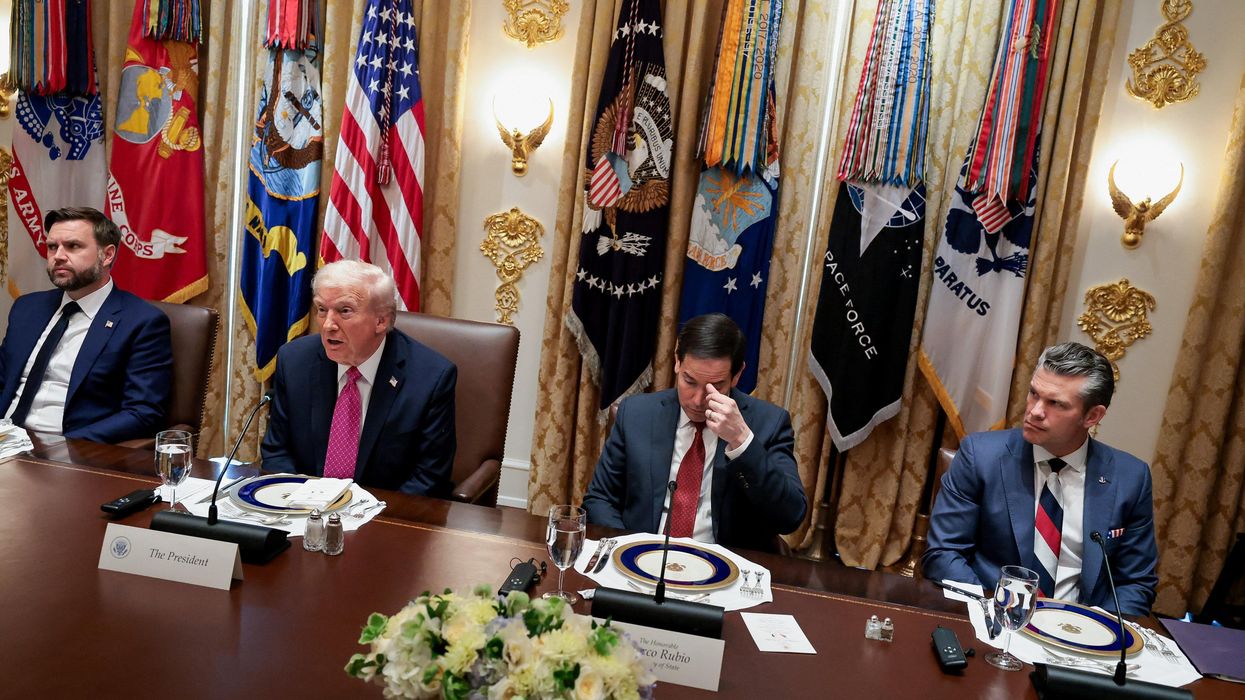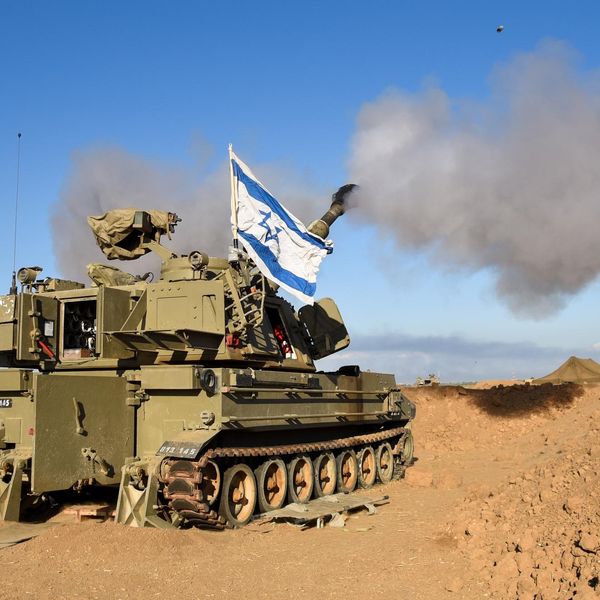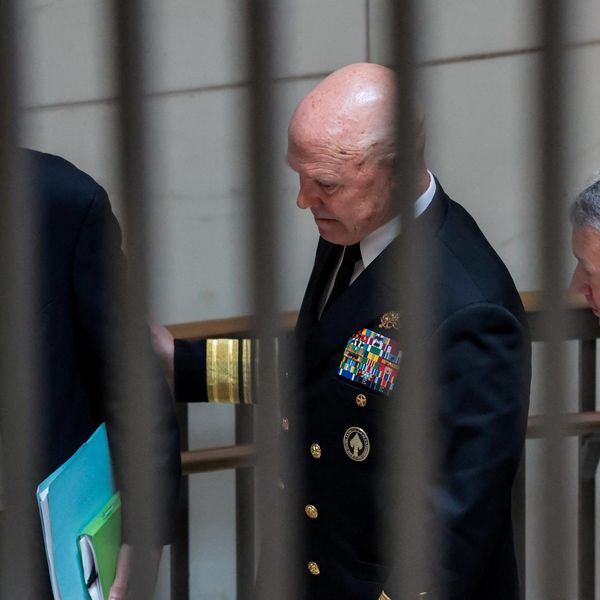As NATO looms ever larger as a major actor in global affairs in the wake of the war in Ukraine, the lack of transparency that characterizes its long-range military planning processes poses a serious challenge to democratic oversight.
That observation applies in particular to the regular tri-annual meetings of NATO’s most senior generals, the Chiefs of Defence, or CHODs. The latest of these meetings, in a format known as the NATO Military Committee, took place on May 10 in Brussels. While media coverage was marginally better than usual — see, for example, this Reuters article —concerns remain that member countries’ parliamentarians and publics are being kept in the dark about one of the most opaque but consequential processes within NATO.
At the Vilnius Summit in July, NATO’s political leaders will be asked to approve thousands of pages of secret military plans that will detail for the first time since the Cold War how the alliance would respond to a Russian attack. Most of these plans were drawn up behind closed doors by the permanent Military Representatives at NATO headquarters in Brussels and other NATO and national defense officials, without any prior scrutiny by parliamentary bodies and independent experts.
In a press conference after the CHODs meeting, the Chair of the NATO Military Committee, Admiral Rob Bauer (a Lieutenant admiral in the Royal Netherlands Navy) described it as “historic” because of the “unparalleled integration of NATO and national military planning.” Bauer added that NATO will “for the first time since the end of the Cold War” have “objective, threat-based capability targets to offer to nations.” And this will enable the alliance “to do exactly what the NATO flag symbolises: we will all follow the same compass.”
A compass is often regarded as a failsafe piece in a kit. But as any hiker knows, you also need a map and a very clear idea as to what should happen under your feet as you walk on your compass bearing. If this is not happening, alarm bells should ring, and you need to re-evaluate your path. No such guardrails are in place with NATO’s compass.
In lieu of the hiker’s map, NATO’s top brass have drafted, revised and strengthened a series of military plans and concepts, or what Admiral Bauer refers to as “the family of plans.” since “just like families, they are truly interconnected” (see below). Although these documents remain classified, we are meant to be reassured by the fact that they were reviewed by the CHODs and will be presented to political leaders for endorsement at the Vilnius Summit.
But it is precisely because these targets will have a significant impact on future investments and developments of national armed forces that support at the political level needs to be broader than rubber stamping by Heads of State in Vilnius. NATO's classified ‘family’ of military plans and concepts are as follows :
The Concept for Deterrence and Defense of the Euro-Atlantic Area (DDA): sets out how NATO operates in peace, crisis, and war in meeting the collective defense commitment. The DDA sets out what is needed to deter and defend against two threats (identified in the 2022 Strategic Concept): Russia and terrorist groups. The strategic and regional plans that come out of the DDA drive NATO’s structure, operations and future investments, including equipment, command and control structures, infrastructure and logistics.
Regional Plans: describe how NATO will defend a particular geographic area (against Russia and terrorist groups). These blend national defense plans of front-line member states into collective NATO plans and thereby seek to optimize NATO’s ability to move forces to the right place at the right time.
Functional Plans or Strategic Subordinate Plans (SSPs): detail how to manage “theatre-wide” assets, e.g., the “SSP for enablement” (covering transportation equipment etc) is currently being revised to reflect the new regional plans.
Force Structure Requirements : the number and types of equipment and organizations that NATO requires to implement the DDA and regional plans, across all regions and domains (air, land, maritime, space and cyber).NATO
Force Model: sets out what is required to produce more troops at high readiness across NATO. The alliance agreed in 2022 to put 300,000 troops on high alert, up from 40,000 in the past.
Once again, key takeaways from the conversations by the generals were shrouded in secrecy. None of the sessions were open to the public or media, and the only details that were made publicly available were included in a NATO news brief, as well as the transcript of some brief opening remarks by Admiral Bauer and Jens Stoltenberg at the start of the sessions, and the closing joint press conference. No details were provided on the two plenary discussions.
The NATO Secretary General has called on political leaders to raise the alliance's military spending target in Vilnius to finance the implementation of these military plans. NATO member states are expected to “agree to a new defence investment pledge, with two percent not as a ceiling we strive to reach, but two percent GDP as a minimum that we have to invest in our defence,” Stoltenberg said ahead of the meeting. A new “NATO Defence Production Action Plan” is also on the agenda, with the aim of setting guidelines for increased military equipment production and manufacturing capacity.
While it will take a few years for these plans to be fully implemented, they set NATO and member states on a path from which it will be difficult to deviate. Hence, they need to be open and visible, with the reasons for likely outcomes clearly outlined. Otherwise, how can we be confident of moving in the right direction, especially given all the costs and risks of accelerating militarization?
Proper parliamentary scrutiny is needed to ensure that the decision-making processes are clear, that the people taking decisions are held accountable for those decisions and to ensure that there are opportunities for national parliaments to influence and improve the plans.
However, none of the 31 NATO member states carries out systematic parliamentary scrutiny of NATO proposals before they are endorsed at summits, and post-parliamentary review of NATO decisions is sporadic and ineffective. Legislators know little about what goes on in NATO intergovernmental working groups, and their limited knowledge makes it hard if not impossible for them to scrutinize their government’s involvement in NATO effectively or hold anyone to account for decisions taken within the alliance.
To address this democratic deficit, each member state should establish a new NATO scrutiny select committee. This committee should sift all NATO draft proposals, to identify which require further scrutiny and draw them to the attention of other parliamentarians and the public. For significant areas of policy development, such as new military plans, the committees should be able to call for evidence by NATO officials and secure a parliamentary debate on issues they deem significant. In addition, each member state should commit to holding an annual “Status of NATO” debate.
Finally, given that effective communication is essential to building resilience in a volatile world, then more must be done to create awareness and understanding of NATO plans among the public. Not only would this increase trust in national and NATO responses, but greater open access to such plans would also serve as a deterrent to those that threaten us. Had Moscow understood more clearly the ability of Ukraine to resist the Russian military invasion, for example, it may have been deterred from launching it in the first place.
















